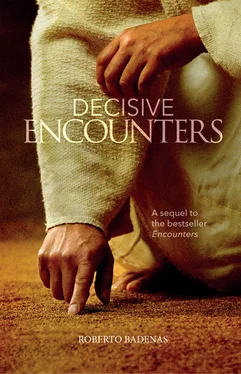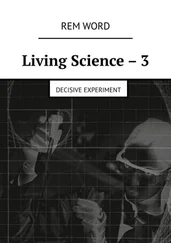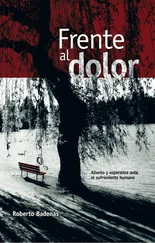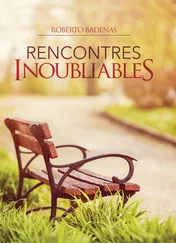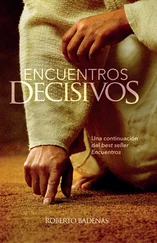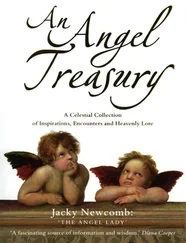Collection: Seeds of Hope
Title: Decisive Encounters
Author: Roberto Badenas
Translator: Celia Gómez
Edition, design and project development: Editorial Safeliz team
© Editorial Safeliz, S. L.
Copyright by © Editorial Safeliz, S. L.
Pradillo, 6 · Pol. Ind. La Mina
E-28770 · Colmenar Viejo, Madrid, Spain
Tel.: [+34] 91 845 98 77 · Fax: [+34] 91 845 98 65
admin@safeliz.com · www.safeliz.com
ISBN: 978-84-7208-852-8
All rights reserved. No part of this book may be transmitted
or reproduced in any form or by any means, electronic
or mechanical, including photocopying and recording, or by any
information storage and retrieval system, without permission
in writing from the publisher.
Unless otherwise indicated, all Scripture quotations are taken from THE HOLY BIBLE, NEW INTERNATIONAL VERSION. Copyright © 1973, 1978, 1984, 2011 by Biblica, Inc. Used by permission. All rights reserved worldwide.
Scripture marked NKJV is taken from the New King James Version. Copyright © 1982 by Thomas Nelson. Used by permission. All rights reserved.
Italics in quotations of the above translations are added by the author for emphasis.
Index
Introduction 7
Preface: The Temptation 11
1. The Meeting 25
2. The Invitation 37
3. The Call 51
4. The Wedding 61
5. The Disagreement 75
6. The Healing 87
7. The Embrace 99
8. The Forgiveness 109
9. The Contact 119
10. The Look 129
11. The Liberation 145
12. The Storm 159
13. The Tomb 169
14. The Supper 179
15. The Escape 191
16. The Kiss 199
17. The Dream 209
18. The Compassion 219
19. The Promise 227
20. The Reconciliation 241
Epilogue: The Farewell 255
To whoever seeks spiritual roads beyond
the hackneyed paths, hoping
that on them the promise of Jesus is fulfilled:
“. . . seek and you will find . . .
the one who seeks finds . . .” (Matt. 7:7-8)
Introduction
It has been said: “every important decision in life, every great love, emerges from an encounter.”1 Indeed, much of what we become is owed to others. Throughout our existence, we gradually shape ourselves; from encounter to encounter we build and destroy ourselves. Fortuitous, expected or feared, banal or extraordinary, our encounters mark us, some in a decisive way.
Disoriented in our search, trapped in the clutches of our own routines or surprised by the storm—in the most unexpected occasions of life, at the turn of a corner, in the face of an accident, before an open tomb—we face an encounter, an idea, a word, a glance, a gesture, an embrace, a kiss (who knows . . . ?) that decides our destiny.
At a given moment divine grace also bursts into our lives. It can occur at random from circumstances or arrive at the end of a long wait, like love at first sight or a friendship. And that encounter becomes the crossroads of our most personal, most profound story. The consequences, often irreversible, can be eternal.
Contrary to what some believe, apart from rare exceptions, those encounters do not usually present themselves as irrefutable supernatural interventions. They most frequently occur without us realizing it: something happens to us that questions us and changes the course of our existence. It may even be the case that the encounter is so subtle that is goes unnoticed, and we go on as if nothing had happened. However, the marvelous miracle of memory waits as long as necessary, crouched down in us with divine patience. A day arrives over time when, without knowing how the pieces of the jigsaw puzzle are put in place, we clearly see an image that stands out as a revelation. Pieces may be missing, but we can already recognize the message. We then rescue from our memories that which we ignored in its day. And it dawns on us that at some moment providence placed itself within our reach. That strange mystery makes sense, and our contact with God begins to flourish. Without realizing it we are living, on a spiritual level, “the non-transferable experience of the encounter.”2
In the pages that follow I attempt, simply, to share reflections arising from some decisive moments from the lives of men and women—not too different from us—who changed their destiny upon contact with Jesus. I have already explored this exercise of reflection and imagination with unexpected success in my book Encounters. Since its publication, already some years ago, many readers have asked me to publish more “encounters.” Due to my work and the vicissitudes of life, with its priorities and matters of urgency, I have not been able to do so until now. Finally, you have the expected book. But it is not a continuation of the first one. In twenty years my topics and approaches have changed. And my style also.
In the writing of this book, even more so than on other occasions, I have availed myself, as the scribe of the parable, of “things new and old.”3 I give my heartfelt thanks herein to all who have contributed to providing me the ideas from which I have drawn upon to write these pages. Deserving special mention is Marta Prats Fábregas who, once again, has not spared efforts in the editing of my texts.
The book is especially intended for those who say to themselves, along with the poet: “I live in the hope of meeting with him; but this meeting is not yet.”4 If these reflections manage to reveal any clue that brings them closer to the Teacher, I will feel doubly happy because of the hours I enjoyed meditating on him and writing for them.
1. Phrase attributed to Dr. Albert Schweitzer by Gilbert Cesbron, in his theatre play Il est minuit, Dr. Schweitzer.
2. Martín Gelabert, Salvación como humanización: un esbozo de una teología de la gracia, Madrid: Ediciones Paulinas, 1985, p. 13.
3. Matthew 13:52.
4. Rabindranath Tagore, “Song Offerings” poem 13 (cited from Select Works, Madrid: Edimat, 2015, p. 76).
Preface
The Temptation
What does the lone traveler seek through these wastelands? Where is he headed on the way to the desert? As soon as he leaves the narrow fertile plain of the river, and as he ascends inland, he gradually and hopelessly goes deeper into an increasingly barren place. Having arrived at the summit, when he has lost sight of—faded in the distance—the memory of the last gray-green palm trees, the traveler finds himself lost in a desolate vastness of broken rocky places, whitish like abandoned ossuaries, in which not even goat herders dare to venture. An endless succession of inhospitable stony areas injured by sun-scorched gullies and blinded by dust storms on windy days. A barren plain without shelters, bristling with parched hawthorns, where scorpions survive as best they can.
With the memory of the coolness of the river still drenching his hair, the young man penetrates the ardent loneliness of that wretched place.1 In the distance he hears the howling of jackals driven mad by hunger and thirst, which wait for nightfall to descend into the valley to satiate their instincts. A bird of prey, perhaps a falcon, hovers menacingly, against the cloudless blue sky, gliding over its prey.
What does the wanderer seek where there is hardly anything? What have all those explorers, high-risk adventurers or enlightened mystics searched for in so many other deserts upon embarking on unthinkable journeys alone, testing their limits? Perhaps something more than the fascination of the unknown and its secrets of unexplored areas. Because like it or not, solitude is also the place of inevitable encounter with your own inner world, with its hidden regions, so full of surprises and dangers like the most remote corners of our planet. The desert is the unavoidable place of encounter with oneself.
Читать дальше
